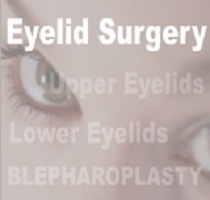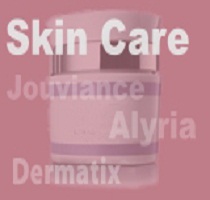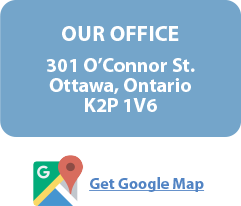Volume 9 • Issue 3
Cosmetic Eyelid Surgery
Commonly Asked Questions

by David R. Jordan
M.D., F.A.C.S., F.R.C.S.(C)
INTRODUCTION
Your eyes are generally the first thing people notice about your face and are an important aspect of facial attractiveness. People with heavy or droopy eyelids are often perceived as being older than their age, tired, and of lower IQ than people with normal appearing eyelids.
The upper and/or lower eyelids become “droopy” or “baggy” over time as the eyelid skin stretches, muscles weaken and fat pockets bulge to become more prominent. This process most commonly occurs because of the aging process but also may be a hereditary condition that runs in ones family. Your eyebrows may also sag or droop as part of the same process.
As the excess skin and/or fat accumulates, the overall attractiveness of one’s eyes decrease leading to a tired and older appearance. When severe, these conditions may lead to an impaired field of vision (baggy upper eyelids) or difficulty wearing glasses (baggy lower lids).
When Should You Consider Cosmetic Eyelid Surgery?
Cosmetic eyelid surgery is a personal decision. Whenever you feel the excess lid skin and fat bags are affecting your facial attractiveness and the way you feel about yourself, it’s time to think about cosmetic eyelid surgery. Most people don’t start thinking about it until their forties, or fifties but it can be considered earlier or later depending upon the individual. From an anatomical standpoint as long as there is enough excess skin and fat to remove, make a visible difference, and, allow the eyelids to open and close properly, cosmetic eyelid surgery can be performed. The best time to do it is when the patient is motivated to have it done. It is an individual choice and each individual needs to make his/her own mind up with no outside pressure to do so.
What Are The Possibilities?
Upper Eyelids – in a surgical procedure known as blepharoplasty, incisions are made in the natural fold of the eyelids to remove excess skin, muscle or fat. Those incisions are then closed with very fine sutures so that, after healing, the surgical sites become virtually unnoticeable. This procedure relieves eyelid heaviness and unnecessary folds, leaving a smooth platform for makeup and a more youthful, energetic appearance.
Lower Lids – Blepharoplasty is also used to correct bulges or puffiness associated with the lower eyelids. Here, the incisions are made directly below the eyelashes to remove excess skin. If only fat and no skin needs to be removed, the incisions can be made behind the lower eyelids in a procedure known as transconjunctival blepharoplasty.
When Should The Brows Be Considered?
Male brows generally lay along the orbital rim or slightly lower while female brows generally are above the orbital rim or parallel to it. Once a female brow falls below the rim and a man’s well below the rim – brow elevation should be considered. If brow elevation is required but only the lids are done, the brows, postoperatively, may be pulled further downward into the lid. Many patients with low brows use their forehead muscles to keep the brows slightly elevated. Once the eyelid skin is removed the forehead muscles relax allowing the brows to fall. Some patients may complain following their upper eyelid surgery that there is little improvement post-operatively. What has actually happened is the eyebrows have fallen giving rise to a heavy eyelid appearance.
Is The Eyelid Surgery Covered By Health Insurance?
Health plans such as the Ministry of Health (OHIP) will only cover the eyelid skin removal on the upper lids if there is a 50% visual field restriction. The eyelid skin has to be covering the top of the pupil. Many people don’t get to this stage until their 70’s or 80’s. OHIP does not cover it simply because “it bothers you”, “you can see it in your field of vision”, or “it acts like a weight on the lid”. There must be a 50% visual field reduction for OHIP to cover it. OHIP will never cover eyebrow surgery even though the eyebrows are extremely low and may be contributing to a 50% visual field restriction.
What Is Involved In The Surgery?
Upper eyelid surgery is generally done under local anesthesia. The anesthesia is injected into the loose skin of the eyelid. Once frozen the excess lid skin ± fat is carefully removed. The incision is closed. The upper lids generally take 15 to 20 minutes per lid and it is not a painful procedure. The eyes are safe during the surgery.
Lower lids are slightly more involved and consume more time (average 1 to 1½ hours). The lower lids may be done under local anesthesia like the upper lids or may occasionally require intravenous sedation for nervous individuals. The eyes are safe during the procedure. Like the upper eyelids, the lower eyelid surgery is not painful.
What Is The Postop Care Routine And How Much Time Is Required Off Work Afterwards?
For upper and lower lids, rest with cool compresses placed over the eyelids every 3 to 4 hours are required to help with bruising and swelling in the first 3 days. In between these times the patient can be up but taking it easy. Thereafter, one can go out but should wear sunglasses as the lids will appear puffy and bruised. If one is too active in the first few days, bleeding could be stimulated which will prolong the recover and could have potential side effects to the eye. I generally recommend 1 week away from work or social gatherings when upper lids are done and 2 weeks when lower lids are done.
Is Cosmetic Eyelid Surgery Safe?
With any surgery there are risks and complications. If the surgery is being performed by an experienced individual preferably with a subspecialty in eyelid surgery, the chances of problems lessen significantly.
Anytime there is an incision in the skin there is a risk of infection. The risk is extremely small. Similarly, anytime there is a cut in the skin there is a risk of bleeding or bruising. This risk can be significantly decreased by avoiding Aspirin, blood thinners, anti-inflammatory medications,
Vitamin E, Ginko Biloba, etc. in the week before surgery as well as resting postoperatively with cool compresses over the lids. If bleeding occurs postoperatively for whatever reason and builds up in the eyelid, it may cause unsightly swelling, pain and potentially apply pressure to the eye which may then affect the vision if not attended to. Following postoperative instructions for rest and the use of cool compresses is extremely important. Scarring is uncommon and can be reduced by meticulous surgical techniques as well as careful post-op care with Vitamin E oil, topical steroid cream and silicone gel to the incision line. In most instances the upper lid incisions blends into the eyelid crease, while the lower lid incision hides just below the lashes. Slight asymmetry of the eyelids may occur if uneven amounts of skin are removed. This can be corrected easily with a small touch up performed generally at 3-4 months post-op. Vision should not be affected other than some mild blurring of vision post-operatively when ointment is being applied to the eyelid incision area and may get into the eye. Rarely, a change in glasses or contact lenses is required post eyelid surgery.
How Does One Avoid The “Wind Swept or Surprised Appearance”?
The best answer I can give is to have your eyelid surgery done by an experienced physician well trained in the eyelid area. In this day and age, there are many types of surgeons performing eyelid surgery including Ophthalmologists (Eye Doctors), Otolaryngologisrts (Ear/Nose/Throat surgeons), Plastic surgeons, General Practitioners, General surgeons, etc. Their training, however, is not the same. An Ophthalmologist with 1-2 additional years of subspecialty training in the eyelids is referred to as an Ophthalmic Plastic and Reconstructive Surgeon or an Oculoplastic Surgeon. An individual with training in this area generally does more eyelid surgery and has more knowledge of the eyelid anatomy than any of the other group of physicians doing this. Although this does not guarantee a lack of complications, it decreases the chance. Furthermore, Ophthalmologists are the only ones qualified to take care of the eye should the patient experience eye troubles following the eyelid surgery. It makes sense to have cosmetic eyelid surgery performed by the individual most qualified to not only do the eyelid surgery, but, also take care of the eye should any eye problems arise.
What Should You Look For In An Eyelid Surgeon?
A qualified individual who has many years of experience and who individualizes his eyelid surgery technique for each patient. Eyelids are not all the same and the surgeon that treats them this way is first one to avoid. Some people need skin removed, others skin and fat, others require brow elevation as well as skin and fat. Removing fat in lids that don’t actually require it will leave the eyelid area with a hollow appearance. Caucasian eyelids are different from Asian eyelids. If the Asian eyelid is treated like a Caucasian eyelid, the Asian patient develops a very unnatural appearance.
If you have any questions regarding the topics of this newsletter, or requests for future topics of InSight, please contact Dr. David R. Jordan office by telephone at (613) 563-3800.







